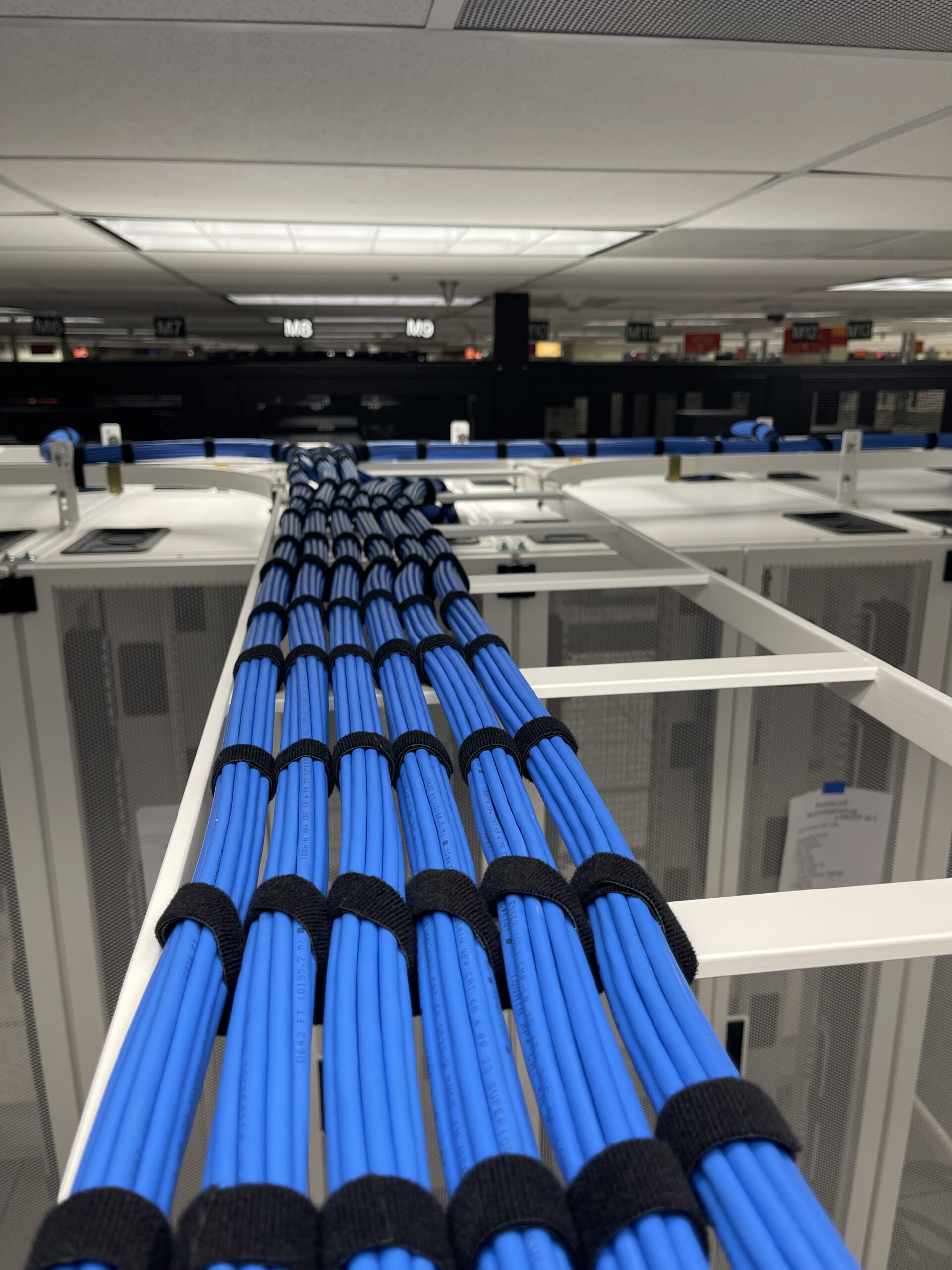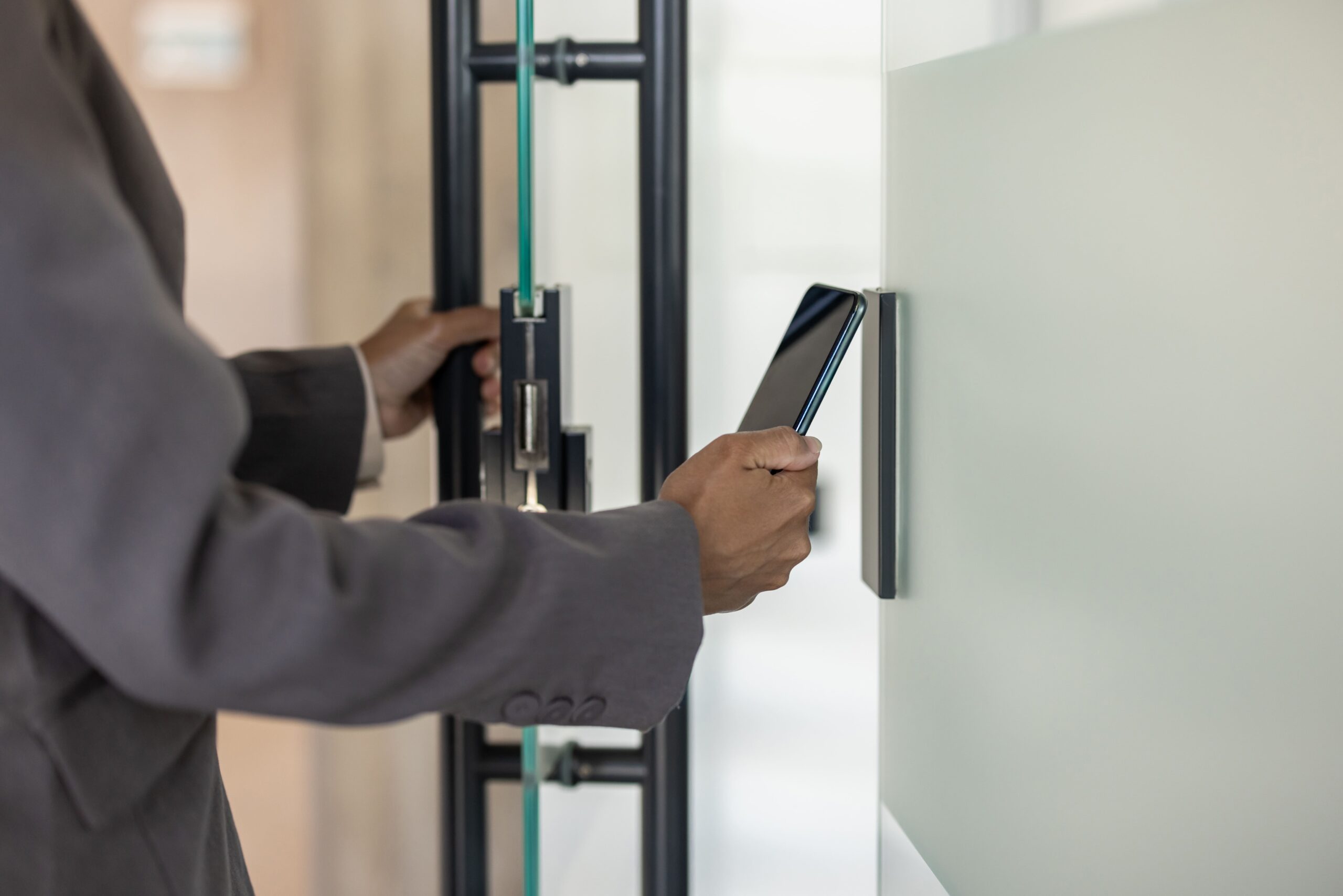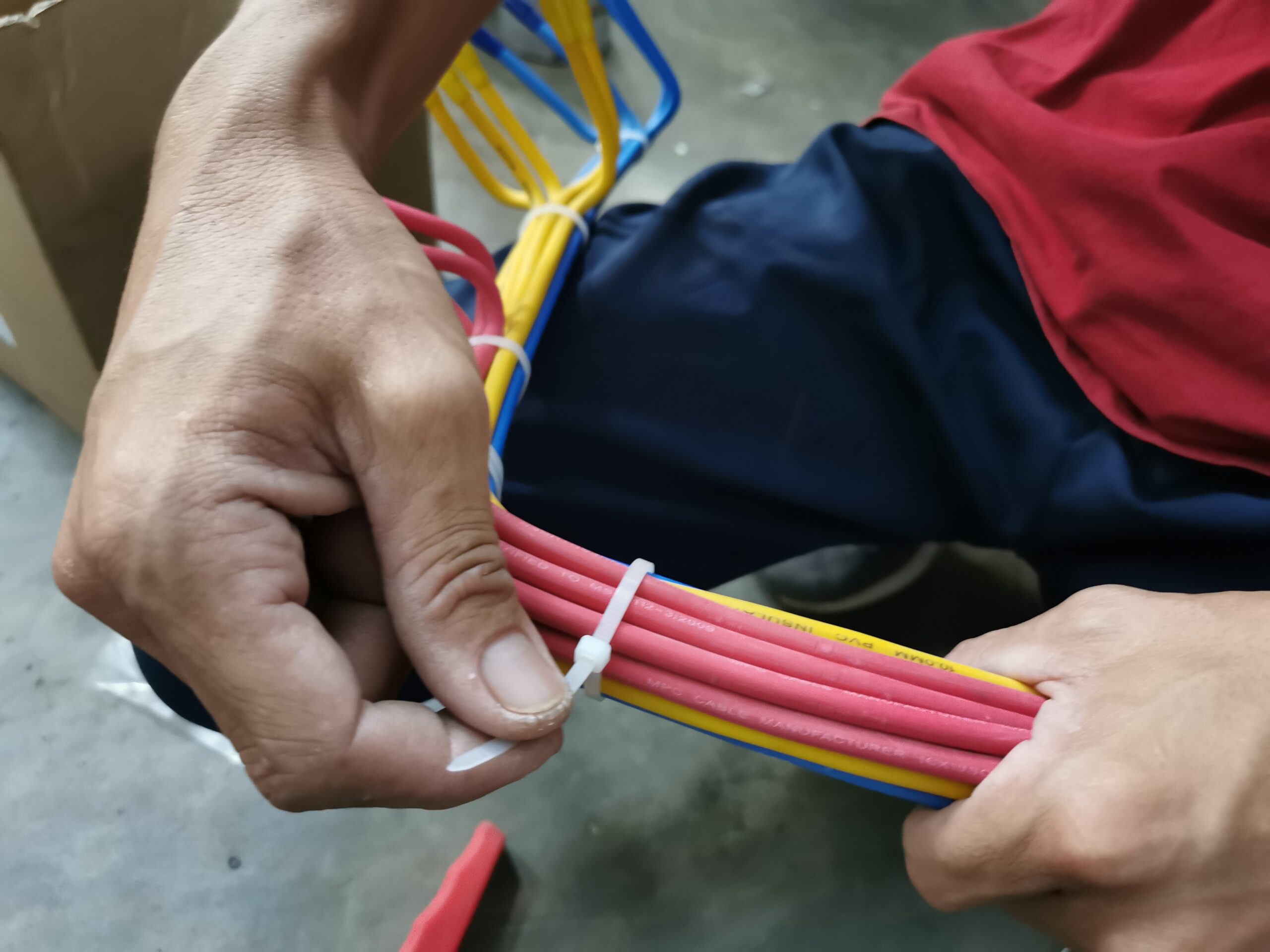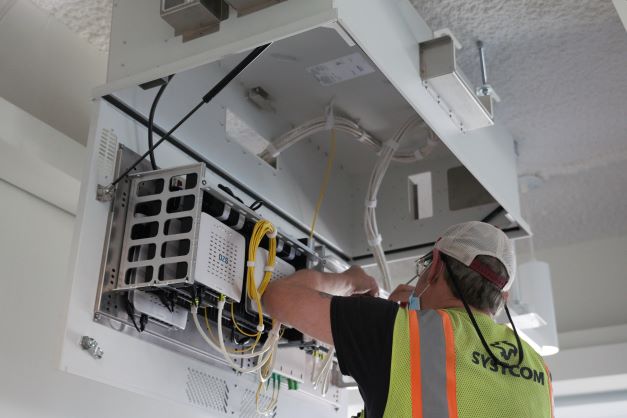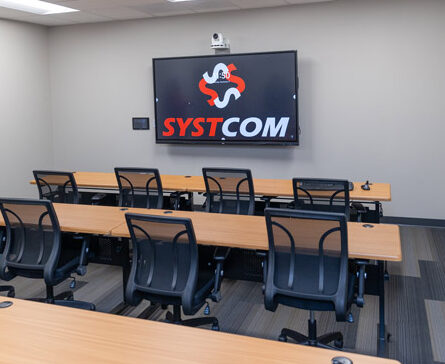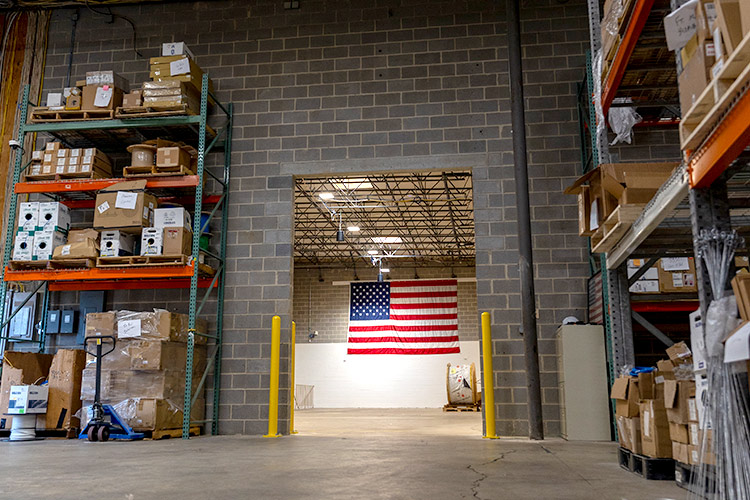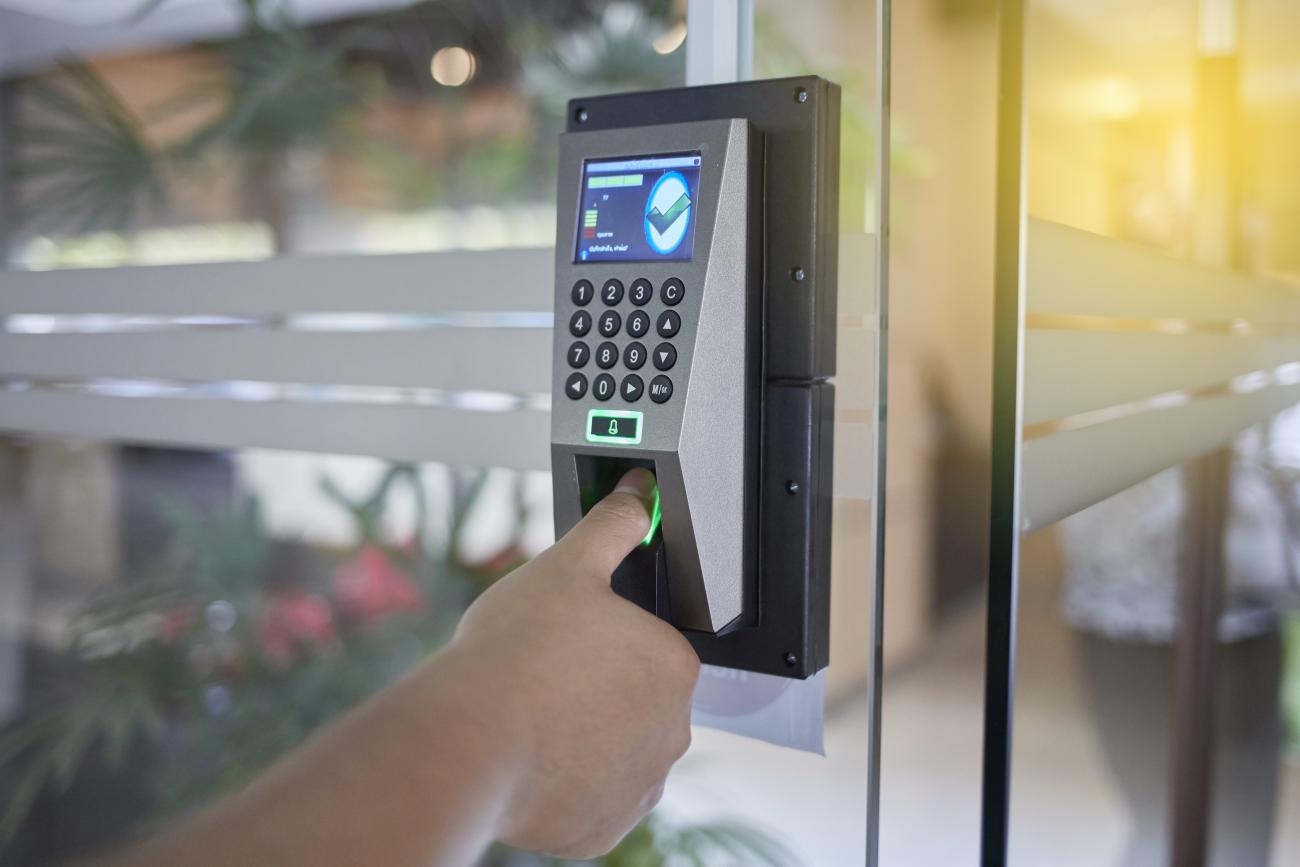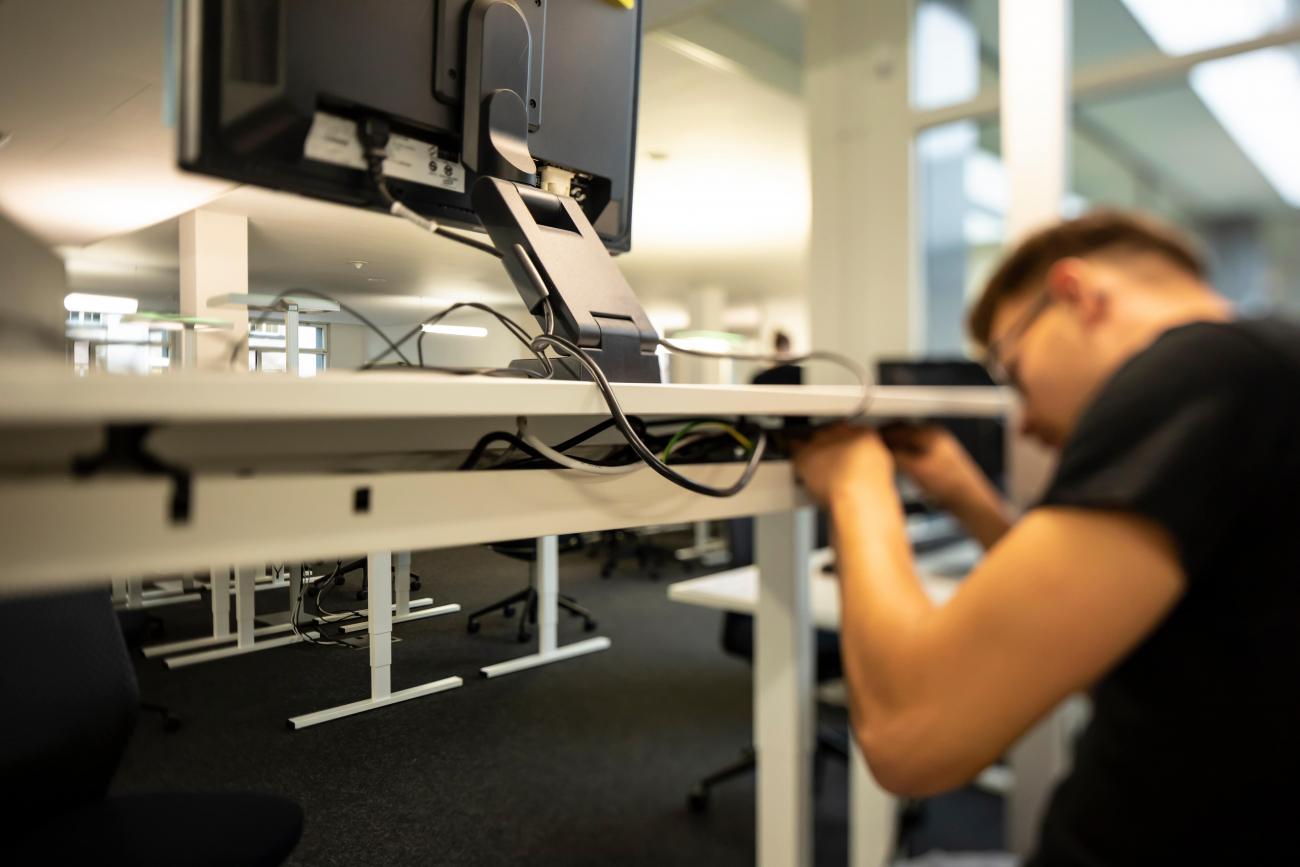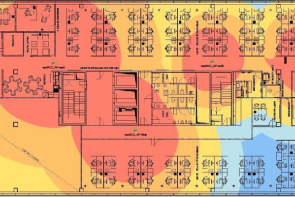In today’s tech-driven world, a reliable network is the backbone of any successful business. Whether you’re moving into a new building, upgrading your infrastructure, or scaling operations, commercial network cable installation is one of the most important decisions you’ll make. At Systcom, we specialize in structured cabling and low-voltage systems that ensure your business stays connected, secure, and future-ready.
Continue readingModern Alarm And Security Systems For Businesses
Security systems have come a long way from simple door locks and alarm sirens. Today, they are sophisticated, technology-driven solutions that provide real-time monitoring, smart automation, and seamless integration with other systems. For businesses, having a robust security system is no longer optional; it’s a necessity.
As a low-voltage cabling company, we understand that security isn’t just about the cameras and sensors you install; it’s about the structured network that supports them. A well-designed low-voltage infrastructure ensures reliability, scalability, and performance, making your security system more effective in protecting what matters most.
The Evolution of Modern Security Systems
Not too long ago, security systems were limited to basic alarms that triggered a siren or alerted a monitoring company via a landline. While these systems provided some level of protection, they lacked flexibility, remote access, and integration capabilities.
Today, security technology has advanced to include smart features that allow users to monitor and control their systems from anywhere using a smartphone or computer. Modern security systems can connect to the cloud, store high-definition video footage, and even use artificial intelligence (AI) to detect threats. These improvements have made security systems more efficient, reducing false alarms and providing real-time insights into what’s happening at a property.
However, the foundation of any reliable security system is its network. A poorly installed or outdated cabling system can lead to connectivity issues, lag, or even complete failure. This is why structured low-voltage cabling is critical for ensuring security devices work seamlessly.
Examples of Modern Security Systems
A modern security system is more than just an alarm—it’s a comprehensive network of devices designed to prevent, detect, and respond to security threats. The following are key features that set modern security systems apart:
1. Smart Surveillance Cameras
Security cameras have evolved from grainy, low-resolution devices to high-definition, internet-connected smart cameras. Today’s IP (Internet Protocol) cameras offer features such as:
- Motion Detection: Automatically records and alerts users when movement is detected.
- Night Vision: Infrared and low-light capabilities ensure visibility in complete darkness.
- Two-Way Audio: Allows users to communicate with visitors or intruders in real-time.
- Cloud & Local Storage: Footage can be stored on local drives or securely in the cloud for easy access.
These cameras can be placed inside or outside a property, and some even use AI-powered facial recognition to distinguish between familiar and unfamiliar faces.
2. Access Control Systems
Controlling who enters a building is a critical aspect of security. Access control systems replace traditional locks with more sophisticated methods such as:
- Keycards or Fobs: Employees or residents use RFID-enabled cards for entry.
- Biometric Access: Fingerprint or facial recognition ensures only authorized individuals can enter.
- Mobile Access: Many systems now allow users to unlock doors via smartphone apps.
For businesses, access control systems can integrate with HR and security software to track attendance, manage permissions, and restrict access to sensitive areas.
3. Alarm & Intrusion Detection
Traditional alarm systems have been upgraded with smart sensors that provide enhanced security. These include:
- Motion Sensors: Detect unauthorized movement inside a property.
- Glass-Break Sensors: Alert homeowners or business owners if a window is shattered.
- Door & Window Sensors: Notify users when a door or window is opened unexpectedly.
Unlike older systems, modern alarm setups can send instant notifications to a user’s smartphone, allowing them to take immediate action.
4. 24/7 Remote Monitoring
One of the biggest advantages of today’s security systems is the ability to monitor properties remotely. With a cloud-connected system, users can:
- View live and recorded video feeds from anywhere.
- Receive alerts for suspicious activity.
- Arm or disarm their security system remotely.
Professional monitoring services can also respond to alerts on behalf of users, dispatching law enforcement or emergency responders when needed.
The Importance of Integrated Security
While each of these security components is valuable on its own, the true power of a modern security system comes from integration. When cameras, alarms, access control, and automation systems work together, security becomes proactive rather than reactive.
Examples of How Security Systems Should Be Integrated
Surveillance Cameras + Access Control
- When an unauthorized person attempts to access a restricted area, the system automatically records footage and sends an alert.
- Facial recognition or license plate recognition can be used to allow or deny access.
Alarms + Smart Lighting
- If an alarm is triggered, smart lighting can automatically turn on, deterring intruders and providing better visibility for cameras.
- Motion-activated lights can complement security cameras by illuminating key areas when movement is detected.
Remote Monitoring + Smart Alerts
- Users can receive mobile notifications when specific events occur, such as a door being opened after business hours or a package delivery at a home.
- Security teams can access real-time footage and logs, allowing for quick response to threats.
Access Control + HVAC & Building Automation
- When employees arrive or leave, the HVAC system can adjust accordingly to save energy.
- If an access control system detects an unauthorized entry attempt, it can trigger an alarm and lock down specific areas.
By integrating these systems, security becomes smarter and more efficient. Instead of relying on multiple disconnected devices, users can manage security from a single platform, reducing complexity and improving response times.
Why Low-Voltage Cabling is Essential for Security
A security system is only as strong as the network it relies on. Many people assume that wireless security devices are the best solution, but in reality, a structured low-voltage cabling system offers several advantages over Wi-Fi-based setups:
- Strong and Stable Connectivity
- Scalability
- Reliability
Low-voltage cabling ensures a stable, hardwired connection for cameras, access control systems, and alarms, reducing the risk of signal loss. This is especially important for large properties, businesses, and areas with high network traffic.
And, as security needs grow, a structured cabling system makes it easier to expand. Whether you’re adding more cameras or upgrading access control points, a well-planned cabling infrastructure supports future upgrades without requiring major rewiring.
Work with a Low-Voltage Cabling Expert
At Systcom, we specialize in designing and installing structured cabling systems that support modern security solutions. Whether you’re upgrading an existing system or installing a new one, we ensure your security infrastructure is reliable, scalable, and built to last.
If you’re considering an upgrade to your security system, let us help you build a network that keeps your property safe. Contact us today for a consultation!
Exploring Low-Voltage Installation Services for New Commercial Construction
Discover the role low voltage cabling plays in modern connectivity, its benefits, and how it can future-proof your infrastructure.
Continue readingUnderstanding the Cost of Business Network Installation
Learn everything you need to know about business network installation costs. Discover the key factors, cost breakdowns, and expert tips to plan a reliable and scalable network for your business. Understanding the Cost of Business Network Installation
Let’s face it—navigating the world of business network installation costs can feel like trying to solve a puzzle with missing pieces. Maybe your current network is slowing everyone down, or perhaps you’re setting up a new office and don’t know where to start.
Whatever your situation, understanding the factors behind these costs can make the process far less daunting.
In this article, we’ll break down everything you need to know about business network installation, so you can plan your budget and make informed decisions with confidence.
What Goes Into a Business Network Installation?
First things first: what does setting up a business network actually involve?
Think of it as building a house—it’s not just about the walls and roof but also the wiring, plumbing, and all the details that make it functional.
Here’s what a typical installation includes:
- Hardware: The heavy hitters like servers, routers, switches, and cabling.
- Software: Network operating systems, firewalls, and management tools.
- Labor Costs: The skilled hands that plan, install, and configure your network.
- Ongoing Maintenance: Keeping everything running smoothly with updates and troubleshooting.
What Affects the Cost of Business Network Installation?
No two networks are the same, which means costs can vary widely. Here are the key factors that influence the price tag:
1. The Size of Your Business and Network Scope
- Small Businesses: A simpler setup might run you $5,000 to $10,000.
- Medium to Large Enterprises: Complex networks with multiple sites can range from $50,000 to $200,000 or more.
2. Your Hardware Needs
Are you going basic or high-performance? The type and quantity of devices you need will play a big role in determining costs.
3. Network Design Complexity
Custom solutions for high-speed internet, redundancy, or remote access add value but also bump up costs.
4. Cabling and Physical Infrastructure
Installing cables or upgrading older buildings can be a significant expense.
5. Labor and Expertise
You’re paying for experience here. Skilled IT pros ensure your network is reliable and efficient.
6. Security Features
Things like firewalls and encryption aren’t just nice to have—they’re essential for protecting your data.
7. Future-Proofing Your Investment
Spending a bit more now on scalable solutions can save you headaches (and money) down the road.
Breaking Down the Numbers
Still wondering what your network might cost? Here’s a ballpark breakdown:

How to Keep Costs in Check Without Compromising Quality
Navigating costs doesn’t have to feel like walking a tightrope. The key is finding the right balance between quality and affordability.
By focusing on smart planning and informed decision-making, you can build a network that fits your needs without overspending. Here are some practical tips to help:
- Know Your Needs: Take a close look at what your business actually requires to avoid overspending on unnecessary features.
- Think Long-Term: Choose solutions that can grow with your business.
- Get Expert Advice: Partner with experienced providers like Systcom for guidance tailored to your needs.
- Don’t Skimp on Quality: High-quality equipment might cost more upfront, but it will save you time and money in the long run.
- Negotiate Smartly: Maintenance contracts are a must, but make sure they align with your budget.
Why Systcom is the Partner You Need
Here’s the deal: at Systcom, we get it. Every business has unique networking needs, and cookie-cutter solutions just don’t cut it.
That’s why we offer custom designs that balance performance, security, and cost. With us, you’ll get transparent pricing, expert advice, and a network that works as hard as you do.
Ready to Build a Network That Works for You?
Let’s make one thing clear: investing in a solid business network isn’t just about cables and routers—it’s about empowering your business to thrive. With the right planning and the right partner, you can create an infrastructure that supports your team and grows with your goals.
Reach out to Systcom today, and let’s get started on building a network that’s reliable, scalable, and tailored just for you.
Technology Needs for New Conference Rooms and Training Centers
Creating modern, highly functional conference rooms and training centers is essential for businesses to prioritize seamless collaboration and efficient communication.

Organizations require conference rooms and training centers that support seamless collaboration, engage participants, and adapt to the demands of modern business.
As a leader in designing and installing high-quality information technology systems, SYSTCOM has extensive experience equipping conference rooms and training facilities with cutting-edge solutions that elevate productivity and streamline operations.
High-Quality Audio-Visual (AV) Systems
Effective communication is at the core of any successful meeting or training session. Quality AV technology ensures participants can see and hear clearly, whether they’re in the room or joining remotely.
High-Definition Displays and Projectors
Opt for ultra-high-definition screens and projectors to ensure every detail is visible. This is essential for presentations, video calls, and interactive training sessions.
High-Fidelity Audio Systems
Superior audio quality is non-negotiable, especially in larger spaces. Ceiling or wall-mounted speakers and advanced soundbars create an immersive experience, eliminating background noise and ensuring clarity.
Wireless Presentation Capabilities
Wireless solutions allow users to share screens from any device, reducing setup time and minimizing the hassle of cables.
Advanced Web Conferencing Solutions
With remote and hybrid work environments becoming the norm, reliable video conferencing technology is essential.
Integrated Video Conferencing Platforms
Solutions such as Zoom Rooms, Microsoft Teams Rooms, or Webex Rooms integrate seamlessly with conference room technology, offering powerful tools for communication, screen sharing, and virtual whiteboarding.
High-Resolution Cameras with Auto-Tracking
High-definition cameras with tracking capabilities follow the speaker, allowing remote attendees to feel more connected and engaged. These cameras provide an inclusive experience, capturing every participant’s contributions.
Echo and Noise-Cancellation Technologies
Noise-canceling microphones and speakers ensure voice clarity, even in open or high-traffic areas, which is crucial for maintaining professionalism during meetings.
Interactive Displays and Smart Boards
For collaborative spaces like training centers, interactive displays and smart boards offer dynamic ways to engage participants.
Touch-Sensitive Displays
Interactive whiteboards allow users to annotate, brainstorm, and visualize concepts in real-time. These devices can connect to participants’ devices, making it easy to share ideas and save changes for future reference.
Smart Board Integration with Cloud Solutions
Interactive displays can connect with cloud-based software, allowing users to access files, work collaboratively, and store data directly on the cloud for ongoing projects.
Digital Whiteboards
Digital whiteboards save time and enhance engagement, especially in training sessions. They allow users to add notes and ideas, and then share or save them for later access.
Lighting and Acoustic Controls
A well-designed space optimizes both lighting and acoustics, making it conducive to focus and communication.
Smart Lighting Systems
Implementing adjustable lighting systems with presets for various needs—such as presentations, video calls, or training sessions—creates the ideal environment for each type of meeting.
Soundproofing and Acoustic Panels
Soundproofing prevents outside noises from disrupting meetings, while acoustic panels absorb sounds within the room, preventing echoes and distractions.
Automatic Shades and Blinds
Rooms with natural lighting can benefit from automated shades that adjust based on daylight. This optimizes visibility and reduces glare on screens during presentations
Unified Control Systems
Unified control systems simplify room management, giving users easy access to all room functions from a single interface.
Centralized Control Panels
These panels allow users to control lights, audio, video, temperature, and shades from one device, ensuring smooth transitions between different room setups.
Voice-Activated Controls
Voice-enabled technology allows for hands-free operation of room systems, making it easier for presenters to adjust settings without disrupting the session.
Remote Room Monitoring and Troubleshooting
Facilities with multiple conference rooms can benefit from remote monitoring, allowing IT teams to manage and troubleshoot issues from a centralized dashboard.
Robust Network Infrastructure
A fast, secure, and reliable network is foundational to supporting these advanced technologies.
High-Bandwidth Connectivity
High-speed internet and secure, reliable Wi-Fi are essential, especially with the increase in cloud-based solutions and remote access.
Dedicated Networks for Conference Rooms
A separate network for conference rooms ensures meetings aren’t affected by bandwidth limitations or cybersecurity risks.
Enhanced Security Protocols
Implementing secure network protocols protects sensitive data, particularly for organizations that handle confidential information during meetings or training sessions.
SYSTCOM brings a wealth of expertise and an innovative approach to technology solutions for conference rooms and training centers. We work closely with our clients to understand their unique needs, providing end-to-end solutions from design and installation to ongoing support. Our focus on quality, reliability, and future-ready systems has made us a trusted partner in creating environments where businesses can thrive.
If you’re looking to equip your conference rooms or training centers with the latest technology, SYSTCOM is here to guide you every step of the way.
Exciting Expansion Underway!
We are excited to announce our expansion!
We are thrilled to announce that we are expanding our infrastructure to better serve our growing clientele and to invest in the welfare of our dedicated employees. As a leading low-voltage system integration company, our commitment to excellence has driven our success, and this latest development marks a significant milestone in our journey.
Growing to Serve You Better

Over the past few years, we have experienced substantial growth and want to use this expansion as an opportunity to serve our clients better.
By expanding our infrastructure, we will be able to better accommodate the demand for our services. This growth enables us to enhance our capabilities, streamline our processes, and deliver even more efficient and effective solutions to our clients. We are excited about the opportunities this expansion brings and look forward to continuing to exceed your expectations.
Investing in Our Team
Investing in the welfare of our employees was a major part of our decision to expand. We believe that our employees are the backbone of our success. Our employees work hard to ensure quality service to each and every client they service. To show our appreciation and to invest in their future, we are making significant improvements to our workplace accommodations.
Of all the new additions, there are two new additions we are especially excited for.
1. A Dedicated Conference Room
Our expansion will include a brand new dedicated conference room with state-of-the-art technology. Our employees upgrade and install great tech for our clients, and now they get to experience an upgraded conference room themselves.
2. A New Training Center
Continuous learning and development are essential for keeping up with the newest technology. This new training center will support our employees’ growth and knowledge of the newest industry trends. By providing our team with the resources they need to stay ahead of industry trends and advancements, we are not only enhancing their skills but also ensuring that our clients benefit from the latest innovations and best practices.
What does this expansion mean for SYSTCOM’s Future?
SYSTCOM has been a proven and growing leader in design, installation, and support of high-quality information technology systems for over 20 years. We believe that by investing in our infrastructure and our team, we are ensuring the continued quality service you expect from us as your go-to low-voltage system integration provider.
We look forward to sharing more updates as our new infrastructure takes shape and to continuing to serve you with the excellence you have come to expect from us.
Thank you for being a part of our journey!
Alarm and Intrusion Detection Systems For Businesses
Protect Your Business and Gain Peace of Mind
Commercial alarm systems and intrusion detection systems play a major role in protecting businesses. They enhance security by deterring criminal activities, can minimize losses, and often lead to reduced insurance premiums.
Are you worried about the safety of your employees and business assets? Do you want to minimize potential threats to your business?
Alarm systems can offer a layer of protection for your business while providing you with peace of mind. Read the information below to gain a better understanding of alarm systems and the security solutions available to your business.
If you have questions or want to speak to a professional about installing a commercial alarm system then contact our security experts.
Don’t underestimate the value of security

Physical security is paramount for any commercial establishment. Theft, vandalism, improper visitor access, fire, etc. are all genuine and potentially devastating threats to business. Underestimating your need for proper security measures can lead to catastrophic financial losses, compromised sensitive information, and damage to a company’s reputation.
A robust commercial alarm system and intrusion detection mechanism are essential components of a comprehensive security strategy.
Investing in a high-quality security system is not merely a cost but a safeguard for your assets, employees, and customers. Not only do security systems deter potential intruders but they can ensure a faster response which minimizes losses if a breach or accident happens.
It’s smart to consider the bottom line for any investment, especially a non-income-generating one. But don’t let the desire to save a dollar cause you to lose thousands. Invest in the safety of your business, it will pay dividends in the long run.
Alarm System Options
As technology has advanced, so have the capabilities and alarm system solutions. When it comes to commercial alarm systems and intrusion detection, businesses have a variety of options to choose from. It’s important to understand the options you have at your disposal to ensure you are getting the best solution for your organization.
The different alarm system options
First, let’s explore the different types of alarm systems. Generally speaking, we often just use the term alarm system to encompass many solutions. But to clarify solutions, we will illustrate using three different alarm systems.
Traditional Alarm Systems: These systems typically include door and window sensors, motion detectors, and sirens. They alert the business owner or security personnel in case of unauthorized access.
Monitored Alarm Systems: These systems are connected to a monitoring center that provides 24/7 surveillance. In the event of an alarm trigger, the monitoring center can quickly dispatch security personnel or contact emergency services.
Smart Alarm Systems: Integrated with IoT technology, these systems can be controlled and monitored remotely via smartphones or other devices. They often come with advanced features such as real-time alerts, remote arm/disarm capabilities, and integration with other smart devices.
All alarm systems serve the same general purpose but can be optimized based on your needs.
Intrusion detection systems vs alarm systems
When looking to protect your business, it’s important to understand the distinction between intrusion detection and security alarms. While similar in function, they do work slightly differently and have different purposes. For the purposes of this blog, we will keep things simple.
As you likely know, an alarm system will sound when a sensor is disturbed. If a door is opened or glass is broken while the alarm is armed then it will sound.
Intrusion detection similarly uses sensors but does not always sound an alarm. Its duty is to alert someone when suspicious activity is recognized. For example, if there’s movement outside the building after hours the intrusion detection system can turn on security cameras and send a notification to you or a security team that something is detected allowing you to sound an alarm or dismiss the activity. This is helpful for nonemergency situations like a raccoon knocking over a trashcan next to your building.
It’s important to have some knowledge of the systems you are investing in to help ensure you are getting what you need. But, the best way to ensure you are adequately prepared is to focus on your physical security in its entirety.
Think Holistically with an Integrated Security System
Security systems are often thought about singularly. A business owner may want surveillance cameras or an alarm system but don’t think about how different security equipment works together to offer more complete security protection.
For example, an alarm system alone can alert security AFTER something has happened but there could have been measures in place that prevented the occurrence from happening altogether. Another example would be having surveillance cameras with no alarm system. You can look back to try to identify the perpetrator but it could be too late to prevent the loss.
An integrated security system combines various elements to provide comprehensive protection. When you think about security in terms of an integrated system, your business is better protected and can dramatically reduce the risk of loss or occurrences.
Let’s explore some of the different components.
Access Control
Access control systems regulate who can enter specific areas within a facility. They range from simple keycard systems to advanced biometric scanners. Proper access control ensures that only authorized personnel can access sensitive areas, thereby reducing the risk of internal theft or data breaches.
Video Surveillance
Video surveillance systems are crucial for monitoring activities within and around a facility. Modern systems offer high-definition video, night vision, and remote viewing capabilities. Surveillance cameras not only deter criminal activity but also provide valuable evidence in case of an incident.
Intrusion Detection
Intrusion detection systems (IDS) are designed to detect unauthorized entry into a building or area. They use various sensors, such as motion detectors, glass break sensors, and door/window contacts, to identify potential threats and trigger alarms.
Integrated Security Management
Combining these components into a unified security management platform allows for centralized control and monitoring. This integration facilitates seamless communication between different security devices, enabling quicker response times and more efficient incident management.
Alarm systems by themselves are a great asset to any business. But consider how an integrated security system can offer more complete protection.
Why You Should Choose Professional Installation Over DIY Installation
Alarm system technology has become more readily available to purchase online and easy to install. These alarm systems can even be priced more competitively than your local security installers.
While these security systems may appear cost-effective initially, the advantages often stop there. Professional installation offers significant advantages that are well worth the potential higher upfront investment. Here’s what you will receive with a professional installation company.
Expertise and Customization
Professional installers have the expertise to assess your specific security needs and customize a system accordingly. They understand the nuances of different environments and can recommend the best solutions for optimal coverage and effectiveness.
Integration and Scalability
Professionals can ensure that all components of your security system are properly integrated, allowing for seamless operation and future scalability. This is crucial for businesses that may need to expand or upgrade their security infrastructure over time.
Compliance and Standards
Professional installers are knowledgeable about industry standards and regulatory requirements. They can ensure that your security system complies with relevant laws and guidelines, reducing the risk of legal issues.
Do you know the best place to place sensors or cameras on your premises to avoid criminals getting past your systems undetected? Do you have the knowledge to know which equipment to purchase for optimal security? Do you have the time to invest in installing, testing and potentially reinstalling your security systems to ensure proper functionality?
A security system expert can do all these things for you which minimizes your risk and won’t cause disruption to your operations. We encourage you to contact a security system professional to help identify your needs and to properly install your systems.
If your facility is in Maryland, Virginia, or DC we encourage you to give us a call! We specialize in the installation of integrated security systems.
Having Your Office Equipment Installed By A Computer Network Installation Company
Having Your Office Equipment Installed By A Computer Network Installation Company
Continue readingOverhead Paging Systems Installation
Explore the necessary components of installing an overhead paging system
Continue readingWhat is a Wireless Site Survey and Should You Invest in One?
Explore how a wireless site survey can help assess your wireless network coverage and ensure high performance
Continue reading